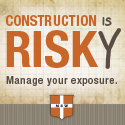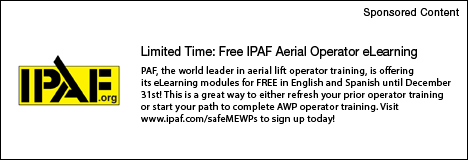BY DEBRA WOOD
Data collection and reporting with iAuditor from SafetyCulture allows construction managers to quickly recognize and correct hazards to improve jobsite safety.
"We created an app that was focused on empowering the front-line people and giving them the ability to create a digital workflow," says Luke Anear, founder and CEO of SafetyCulture in Sydney, Australia.
"This is giving construction companies real-time visibility of their operations on site. They can share that information quickly as reports are done automatically."
Contractors can set up the inspection forms they want to use and comply with the Occupational Safety and Health Administration for the type of work being done. SafetyCulture iAuditor features a library with more than 60,000 templates. Users can place reminders in the audit specific to that job or location and set up alerts to notify a supervisor the moment an issue is identified.
"I like the ability to make it your own," says Mike Gimpel, an AECOM environmental, safety & health specialist, working on the Caterpillar Global Services Project, with more than 600 people at 30 Caterpillar facilities. AECOM is a member of multiple AGC chapters.
"It’s crucial to remain in contact with all of those guys," Gimpel says.
AECOM began using SafetyCulture iAuditor two years ago for workplace and other safety inspections. But now it uses it to manage the entire safety program. Management can review audits by members of their team.
Gimpel estimates it took supervisors two hours to complete a safety audit on paper and document it by inputting the information into a spread sheet. Now, with SafetyCulture iAuditor, it takes minutes.
"Your supervisors are in the field, and that’s where they need to be to keep your guys safe," Gimpel says.
SafetyCulture iAuditor has GPS integration and will instantly add a location to the checklist or a photo. End users can highlight, draw or circle specific areas or points-of-interest on a photo, making communication between team members and subcontractors easier. It can be used for quality assessments as well as safety.
"It shows the customer how the work was done," Anear says.
The app integrates with Salesforce and SharePoint. People can add information even when internet access is not available and sync the checklist with SafetyCulture when cellular service becomes obtainable again. The software works on Apple and Android phones and tablets and on desktop computers. A Windows version is coming this year.
Gimpel says learning to use SafetyCulture iAuditor is easy, even for people who spent most of their lives in a paper-based world.
"Ease of use drives the engagement," Anear says. "Even the most unlikely workers pick it up, use it and love it very quickly."
Anear estimates inspections not only take less time but also increase the amount of data collected.
"We want to make safety available to every worker in the field," Anear says.
iAUDITOR
221 Sturt Street
Townsville QLD 4810 Australia
U.S. - 816-787-1343
www.safetyculture.io
Free to use and create PDF files. Interested contractors can try a paid plan for free for 30 days. The cost is $9 per user per month to unlock exporting to Word or Excel. Advanced exporting allows direct uploading to the construction firm’s server. It costs $9 per month to create full backups and collaborate with teams.

 2300 Wilson Boulevard, Suite 300 · Arlington, VA 22201 · 703-548-3118 (phone) · 703-548-3119 (fax) · www.agc.org
2300 Wilson Boulevard, Suite 300 · Arlington, VA 22201 · 703-548-3118 (phone) · 703-548-3119 (fax) · www.agc.org
 BLS Data Shows Drop in Recordable Workplace Injuries and Illnesses in 2015
BLS Data Shows Drop in Recordable Workplace Injuries and Illnesses in 2015


